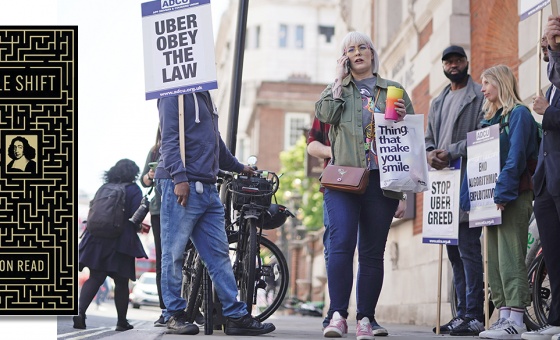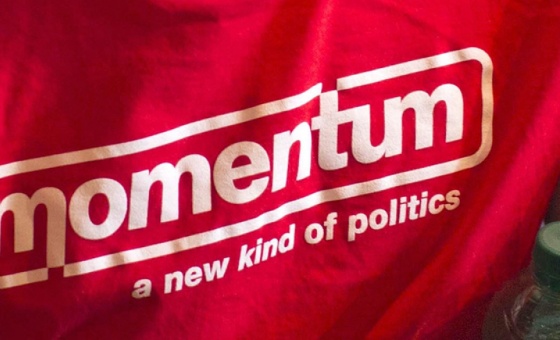This is the last article you can read this month
You can read more article this month
You can read more articles this month
Sorry your limit is up for this month
Reset on:
Please help support the Morning Star by subscribing here
SIXTY-FIVE years ago today, thousands of marchers arrived at the Atomic Weapons Establishment in Aldermaston, Berkshire, protesting against the British nuclear bomb being built there.
These marchers were in at the start of a mass movement, the Campaign for Nuclear Disarmament, which was to transform the very nature of protest and shape social movements for decades to come.
The world into which CND emerged was changing rapidly. The colonial empires were being dismantled as national liberation movements achieved the independence of their countries. European colonial power in Asia was ending.
Ghana was the first colony in Africa to gain its independence in 1957, under the leadership of Kwame Nkrumah.
Others followed rapidly. A revolution in Cuba in 1959, under the leadership of Fidel Castro, kicked out the corrupt dictator Batista and engaged in a programme of social and economic reform.
But major social change was not confined to the former colonies. In Britain, the establishment of the welfare state by the postwar Labour government had brought health and education to all, and full employment brought jobs for all.
The great vision of the UN, for a world free of injustice, poverty and war, held widespread resonance.
In many ways there was a new confidence in the ability to build a world based on science and reason, that social progress and advance for all peoples were unstoppable.
This was also the time when “youth culture” emerged as a distinct social and cultural phenomenon, as education and wider opportunities created a more affluent and articulate generation of young people.
CND in its early years was inextricably linked to the social radicalisation of the time. The early Aldermaston marches represented microcosms of the new Britain, articulating both widespread popular dissent and the social rebellion of the youth of the time.
In many respects it was through the early mobilisations of the anti-nuclear movement that the radical politics of what were to become the new social movements were first expressed.
Early sociological studies suggested that many of CND’s early supporters had no formal faith or politics, and were more concerned about “working for a more humane society than in finding themselves a good job.”
In particular, surveys found that there was an immediacy to campaigners’ concerns: “They believed that the bomb immediately threatened the future of civilisation, that it had to be banned very quickly or Armageddon would come first.”
The first march to Aldermaston was an initiative of the Direct Action Committee against Nuclear War. Their organising committee included Hugh Jenkins, who was later to become chair of CND from 1979-81, Frank Allaun MP, Walter Wolfgang from the Labour Hydrogen Bomb Committee and Pat Arrowsmith, who became the march organiser.
CND was founded in February 1958 and came on board to support the march. Rapidly, the Aldermaston marches, repeated over a number of years and on and off over the decades, became synonymous with CND.
A lasting consequence of the first march was the famous symbol produced by the artist Gerald Holtom, which became CND’s own symbol and is universally recognised as the sign of peace.
According to Peggy Duff, who worked for CND in its early years, the artist explained the symbol in the following way: “First, the semaphore for the initials N and D.
“Second, the broken cross meant the death of man, the circle the unborn child. It represented the threat of nuclear weapons to all mankind, and, because this was new, the threat to the unborn child.”
Very soon thereafter, the symbol came to adorn badges, posters, leaflets, mugs, banners; and ever since has been graffitied onto walls and virtually any available flat surface all over the world.
The leaflet for the march welcomed “all who are opposed on any ground to nuclear weapons, whether possessed by the British, American or Russian governments.”
It urged people to “walk for a weekend, a day or an hour,” and remarkably large numbers did so, despite the fact that it was the wettest Easter weekend since 1900.
Almost 6,000 attended the send-off rally in Trafalgar Square, and around 4,000 began the 52-mile, four-day march.
Around 8,000 converged on Aldermaston on the final day, marching the last mile in silence. These numbers far exceeded the expectations of the organisers, who had thought they might get around 300.
But the enthusiasm with which people from all walks of life flocked to the Aldermaston march was not confined to this single event alone.
Hundreds of CND groups — over 450 by 1960 — sprang up around the country; mass meetings took place, demonstrations and rallies abounded and young people were involved everywhere in large numbers.
In 1959, CND organised another march, this time from Aldermaston to London. The purpose of the route reversal was to indicate CND’s intention to take its message to the heart of political power; to tell the government that a change of policy was needed.
Thousands participated in the march itself and 20,000 came to the final rally in Trafalgar Square. According to an informal survey, over 40 per cent of the marchers were under 21.
A year later, in 1960, 40,000 marchers arrived in London, and up to 100,000 joined the rally in Trafalgar Square. Despite the hardship of four gruelling days of walking, sometimes in pouring rain, the marches were characterised by their good nature and friendliness.
Jo Richardson, who was later to be a Labour MP, organised the catering for three of the marches and observed: “Everyone was there to show their opposition to the bomb: organisers, caterers, drivers and, above all, marchers. That’s why there really were no cross words and no problems that couldn’t eventually be solved, in that marvellous spirit of comradeship which is my abiding memory of the Easter marches.”
That sense of unity and comradeship against nuclear weapons is needed now more than ever. On this 65th anniversary of that first Aldermaston march, please show your solidarity and support for a nuclear-free world. Please join CND.
Kate Hudson is general secretary of CND. For more information visit cnduk.org.











